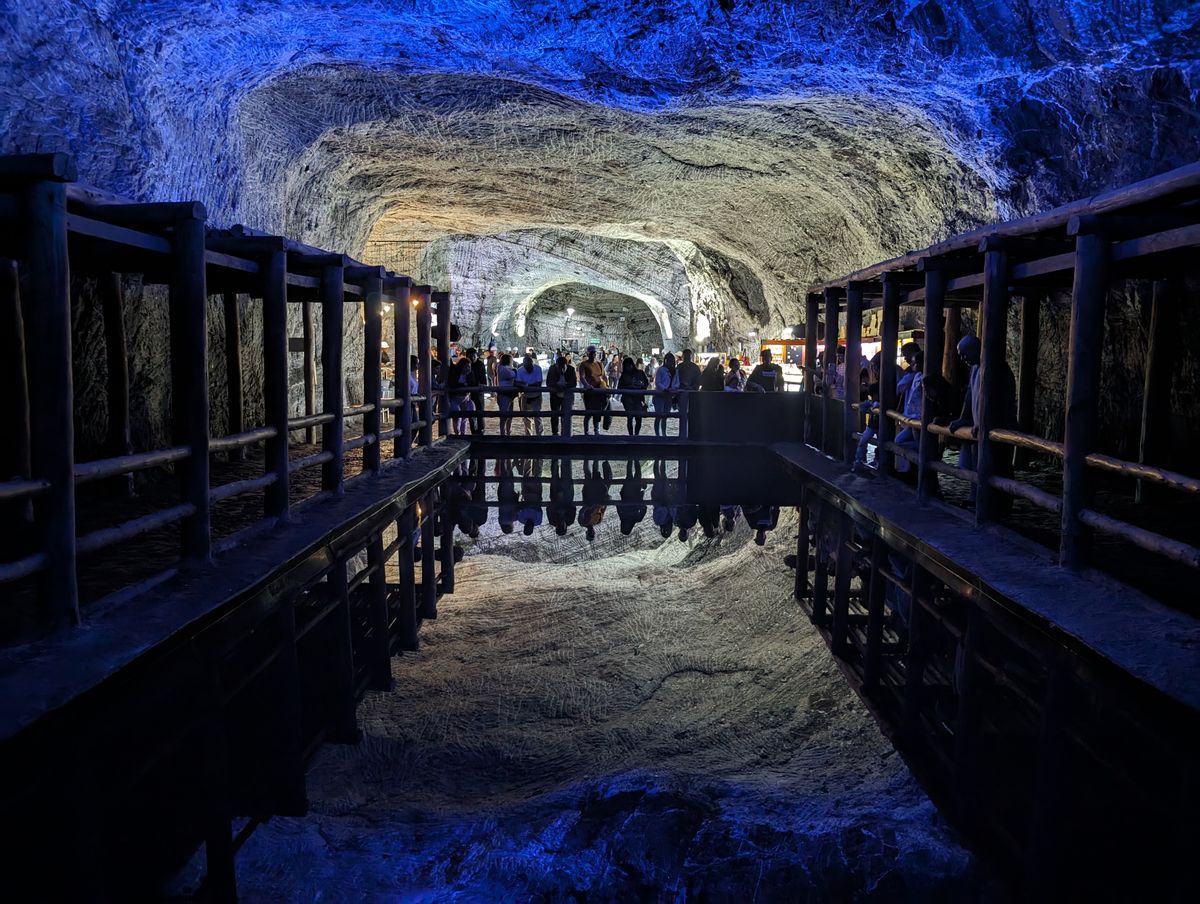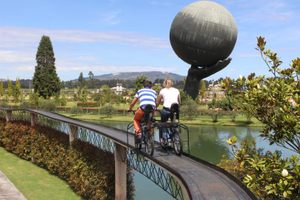About
The story of the Cathedral of Salt of Zipaquira is certainly one of persistence. The original cathedral was carved out of an active salt mine beginning in 1950. Inaugurated in 1954, the cathedral only lasted for 36 years before authorities, worried about its structural soundness, shut it down. This, however, did not deter the town of Zipaquira. In 1991, only a year after shuttering the old cathedral, work began on a new salt church some 200 feet below the old one. The current salt cathedral is roughly 75 meters long and 25 meters high, with a giant cross carved into the back wall. It can theoretically accommodate 10,000 people. Smaller naves dug out around the main chamber illustrate the life of Christ from birth to crucifixion.
These naves are known as "The Stations of the Cross." They chronicle Jesus’ last journey in chronological order. While the Stations of the Cross are standard in Catholic churches, they're typically literal depictions, either as paintings stained glass, or sculptures. Here, each station consists of a cross carved out of or into rock salt that represents the story. Essentially, each station is a small chapel, complete with kneelers for those inclined to pray. While devoted to Catholicism, the salt "cathedral" is not recognized by the Church and has no official status. This doesn't stop the 3,000-plus visitors that come to the cathedral on most Sundays from praising the glory of both God and his mineral-ensconced home.
In addition to the Stations of the Cross, there is a main chapel as well as a couple of smaller chapels. Once you exit the cathedral portion of the mine, there are various exhibits, stores, and dining options.
Related Tags
Know Before You Go
It takes about two to three hours to tour the cathedral. It costs about $16 to enter, and the on-site museum is not included. You need a separate ticket for the museum. Often cold inside the cathedral, so have a cardigan or jacket in the event it’s too cold for you.
There are regular guided tours in Spanish and less frequent guided tours in English. Audio guides for self-guided tours are available in both languages.
Community Contributors
Published
November 16, 2009



































































































